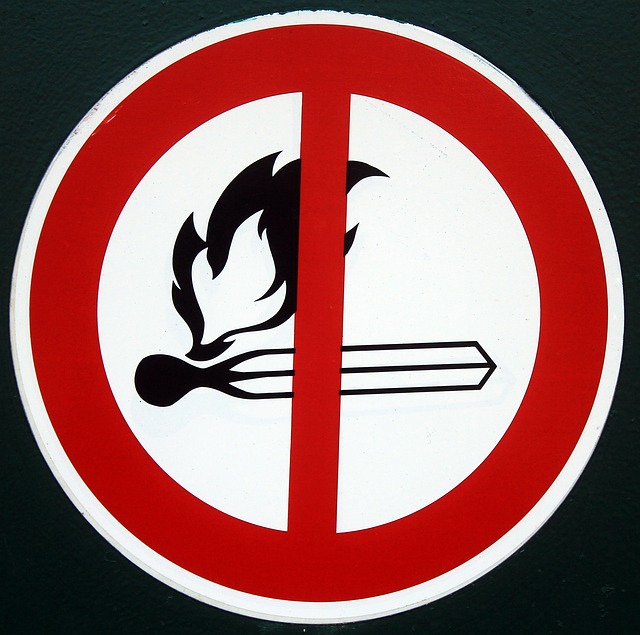Primary Causes of Chemical Hazards
Hazards and accidents primarily arise from the inherent properties of certain chemicals and how they interact with humans, materials, and the environment. The most common causes of chemical hazards include toxicity, where substances can cause harm through inhalation, ingestion, or skin contact. Flammability is another major concern, with many chemicals posing fire risks when exposed to heat or sparks. Reactivity refers to chemicals that can explode or release dangerous gases when mixed with other substances, making them highly volatile. Corrosiveness involves substances that can damage materials or tissues, such as acids or alkalis.
Inadequate labeling, improper storage, and mishandling are also significant contributors to such hazards. Failure to follow safety guidelines, such as using the correct Personal Protective Equipment (PPE) or adhering to chemical safety labels, can lead to dangerous exposures. These risks emphasize the need for strict safety protocols and worker training in industries handling chemicals. Listed below are most prominent types of hazards.
1. Flammable Liquids and Gases

Flammable liquids and gases are commonly used in various industries, from oil refineries to laboratories. Substances like gasoline, ethanol, and hydrogen can easily ignite if exposed to sparks or open flames. The volatility of these chemicals makes them highly dangerous. Chemical labels play a crucial role in indicating flammability risks, usually depicted by a flame symbol.
2. Corrosive Substances
Corrosive chemicals, such as hydrochloric acid and sodium hydroxide, can cause severe burns to skin, eyes, and respiratory tracts. They also corrode metals and other materials, posing risks to equipment and infrastructure. Proper storage, personal protective equipment (PPE), and attention to chemical labels that feature symbols for corrosion are key to managing these substances.
3. Toxic Chemicals
Toxic chemicals like formaldehyde and mercury pose serious health risks upon inhalation, ingestion, or contact. Chronic exposure can lead to organ damage, neurological issues, or even death. When dealing with toxic substances, it’s critical to read chemical labels carefully, which usually feature a skull and crossbones to denote poison or toxicity.
4. Explosive Materials
Explosives such as ammonium nitrate and nitroglycerin can detonate under specific conditions, such as pressure or high temperature. Industries like mining and construction often deal with such materials, and the potential for fatal accidents is high. What is chemical hazards if not an imminent threat to life in such cases? This category is marked with explosive symbols on chemical labels, warning of the potential for devastating consequences.
Also Read: Quality Control for Chemical Methods: Policies & Certifications
5. Oxidizers
Oxidizing chemicals, including hydrogen peroxide and chlorine, can cause or intensify fires by supplying oxygen. These substances aren’t necessarily flammable themselves but increase the risk of combustion when in contact with other materials. Oxidizers are marked on chemical labels with a flame over a circle symbol, signaling their dangerous reactive potential.
6. Carcinogenic Chemicals

Carcinogens such as asbestos and benzene are known to increase the risk of cancer. These chemicals can affect workers exposed over long periods, leading to health complications. Identifying carcinogenic risks is critical, and companies must rely on proper labeling and safety data sheets (SDS) to manage these hazards.
7. Reactive Substances
Reactive chemicals, such as alkali metals and peroxides, can undergo violent reactions when exposed to air, water, or other chemicals. These reactions can lead to fires, explosions, or toxic emissions. Hazardous chemical labels with warning symbols, including those for reactivity, are vital in minimizing the risks of handling these substances.
8. Cryogenic Hazards
Cryogenic materials, including liquid nitrogen and liquid helium, are substances stored at extremely low temperatures. Direct contact with these materials can cause severe frostbite and cold burns. Additionally, when cryogenic substances evaporate, they can displace oxygen in confined spaces, leading to suffocation risks. Always check chemical labels for symbols related to low-temperature storage and handling.
9. Radioactive Materials
Radioactive substances, such as uranium and radium, emit ionizing radiation, which can damage living tissue and lead to conditions like cancer or radiation sickness. Although regulated strictly, workers in certain industries still face exposure risks. Chemical labels with a radiation symbol are vital in ensuring these materials are handled with the utmost caution.
10. Asphyxiants
Asphyxiants, including gases like carbon monoxide and methane, can displace oxygen in the air, leading to suffocation. These invisible killers are particularly hazardous because they often go undetected without proper monitoring equipment. The presence of chemical labels warning of oxygen depletion is critical for identifying areas where asphyxiants may be present.
Importance of Hazardous Chemical Labels
One of the key elements in safely managing hazards related to chemicals is the use of proper labeling. Chemical labels provide vital information about the risks associated with substances, guiding employees and emergency responders in safe handling procedures. The labels typically include pictograms, signal words (such as “Danger” or “Warning”), hazard statements, and precautionary measures. Failing to recognize these warnings can lead to accidents and severe health consequences.
In industries where chemicals are handled regularly, such as manufacturing, chemical processing, or healthcare, training workers to understand hazardous chemical labels is not just a regulatory requirement but a matter of life and death.
Also Read: How Can We Achieve Ultimate Safety in Chemical Manufacturing?
Understanding Hazards to Prevent Them
Hazards can be defined as substances that pose risks to health, safety, and the environment. Whether through flammability, toxicity, corrosiveness, or reactivity, these hazards can cause severe harm if not handled properly. Understanding what is chemical hazard and how they manifest is crucial in mitigating their effects.
Properly managing hazards involve identifying the substance, assessing the risks, and employing measures like hazardous chemical labels, PPE, and appropriate storage and disposal methods. Regulatory agencies like OSHA (Occupational Safety and Health Administration) and the EPA (Environmental Protection Agency) have stringent guidelines on handling hazards, emphasizing the need for thorough safety protocols in the workplace.
How Can Chemical Companies Avoid Hazards?
To avoid hazards, chemical companies must implement a series of structured steps and training procedures to ensure worker safety and regulatory compliance. The following are general steps and training methods that companies can undertake:
1. Hazard Identification and Risk Assessment
The first step involves identifying all potential hazards in the workplace, including toxic, flammable, reactive, and corrosive substances. Risk assessments are then carried out to determine the likelihood and severity of exposure to these chemicals.
2. Proper Labeling and Storage
Companies must ensure that all chemicals are clearly labeled according to regulatory standards, such as the Globally Harmonized System (GHS). Chemical labels must include pictograms, hazard statements, and precautionary measures. Proper storage systems, such as separate containers for incompatible substances, help prevent dangerous reactions.
3. Training on Chemical Labels
Training programs should be developed to educate employees on how to read and understand hazardous chemical labels. Workers must be familiar with symbols indicating flammability, toxicity, corrosiveness, and reactivity, so they can take necessary precautions.
4. Personal Protective Equipment (PPE)
Proper PPE, such as gloves, goggles, and respirators, must be provided and used when handling chemicals. Employees should be trained on how to select and wear the right PPE based on the hazards they are exposed to.
5. Emergency Response Training
Employees must be trained in emergency procedures, including spill containment, fire response, and first aid for chemical exposure. Drills should be conducted regularly to ensure preparedness.
6. Monitoring and Continuous Improvement
Routine inspections, monitoring of safety protocols, and revising procedures as needed ensure that safety measures remain effective. Continuous improvement programs can help adapt to new hazards or regulatory changes.
How Elchemy.com Can Help Chemical Companies
At Elchemy.com, we understand the complexities involved in managing chemical hazards. Whether you’re producing, storing, or transporting chemicals, navigating regulatory requirements like obtaining CAS (Chemical Abstract Service) numbers is essential for safe and legal operations.
Elchemy.com specializes in helping chemical companies manufacture chemicals in compliance with global safety standards. We assist businesses in identifying hazards, applying correct hazardous chemical labels, and ensuring that their processes are aligned with industry regulations. Our team of experts also helps with custom chemical formulations, safety documentation, and obtaining CAS numbers, streamlining your path to compliance and ensuring worker safety. To know more about our services, reach out to us today.















